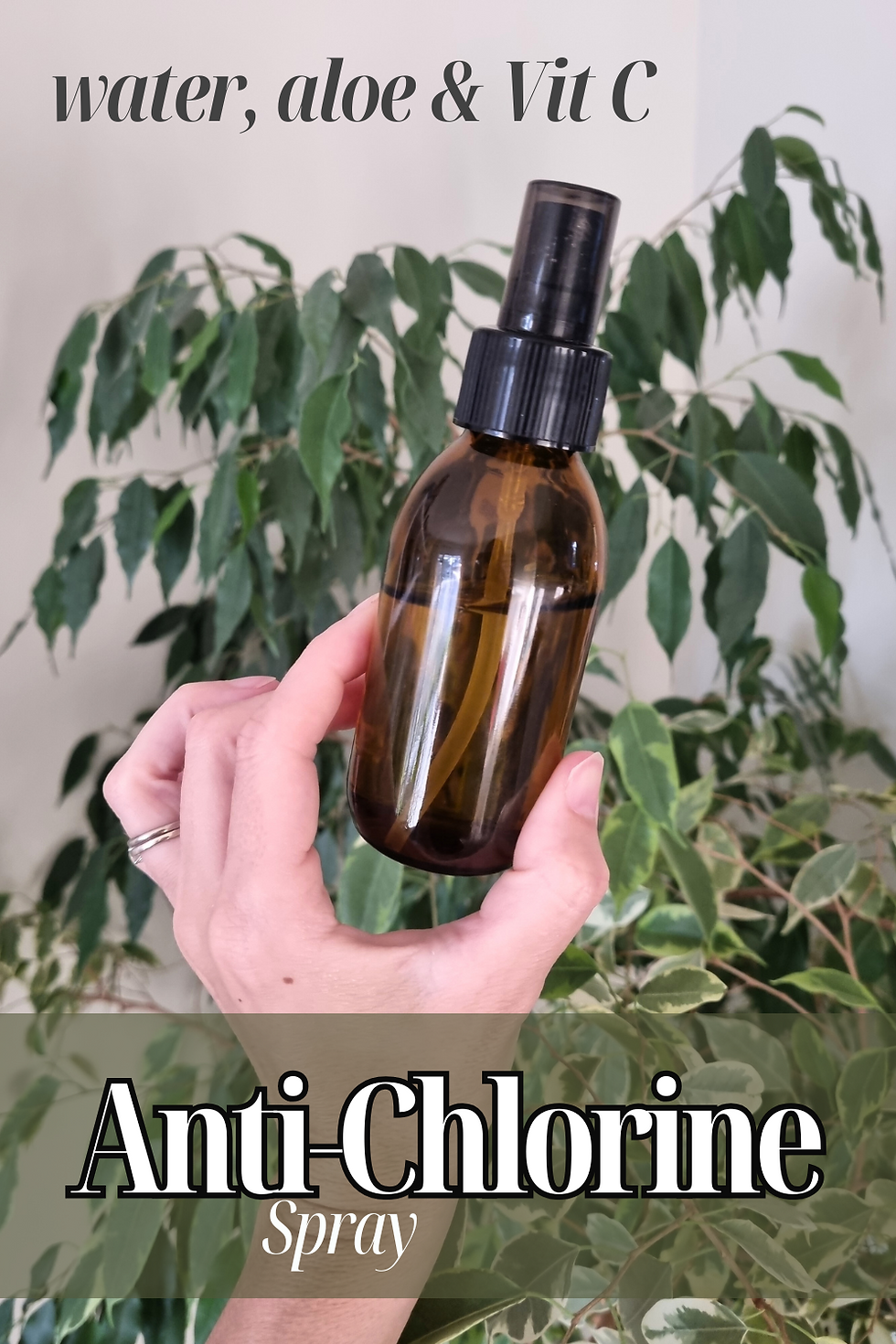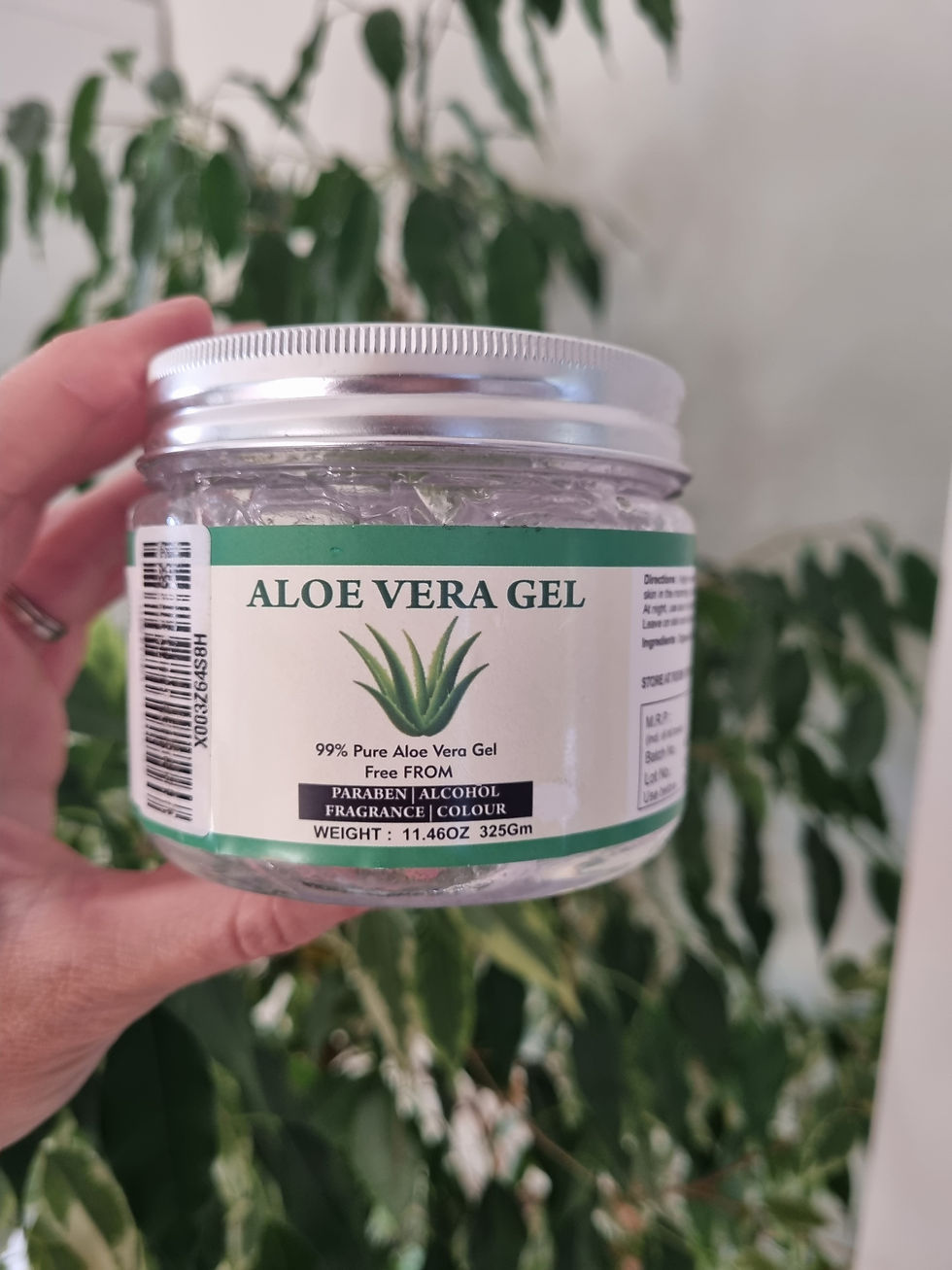DIY Chlorine Neutralizing Spray & why you want to use it
- Carmen Fourie
- Jun 26
- 4 min read
In an ideal world I would prefer not to expose myself or my kid to chlorine (we even rent a whole-house chlorine filter to avoid chlorine EVEN when renting a home), but the reality is we live in a place that is sparse in pools even without adding in the filter of trying to find a chlorine free pool. You can read all about my search for a pool to take my toddler swimming in Calgary here.
Now we could outright avoid chlorine, but I believe it is beneficial for our kid to swim and to learn to swim (again - we live in Calgary, Canada so swimming regularly in natural bodies of water is not an option since either the weather is freezing, or the water is freezing #glacierlakes). Given that we want our kid to have the benefits of swimming - how do we reduce the harm? That's what we'll be talking about today.

Before I dive into the not so fun, but important things I want to offer reassurance that I will be sharing cost effective and easy ways to mitigate the harm.
🌿 Why would we want to use a Chlorine Neutralizing spray?
Chlorine is great at disinfecting pool water—but it can be harsh on the body:
Dries out skin and hair by stripping natural oils
Disrupts your skin microbiome, making irritation more likely
Lingers in hair and skin tissue, even after showering
Can be absorbed through the skin, potentially impacting internal health over time
🧬 What Happens When Chlorine Is Absorbed Through the Skin?
Your skin can absorb chlorine and its byproducts, especially during prolonged exposure to warm pool water. Several studies suggest this may contribute to a toxic load on the body over time, especially with regular swimming.
Here’s what research shows:
📌 Increased Internal Chlorine Absorption
You can absorb more chlorine and its byproducts (like trihalomethanes, or THMs) through your skin and lungs during a single swim than you would by drinking chlorinated tap water all day.
➤ Villanueva et al., 2007; Environmental Health Perspectives
📌 Potential Health Effects
Oxidative stress & DNA damage (linked to chronic disease)
➤ Villanueva et al., 2007
Disruption of iodine uptake, potentially affecting thyroid function
➤ National Research Council, 2007
Respiratory concerns, especially in kids, due to chloramines
➤ Bernard et al., 2007
Altered microbiome and increased risk of eczema, asthma, or irritation in frequent swimmers
➤ Bernard et al., 2009
Children are especially vulnerable: their skin is thinner, their detox systems are immature, and they absorb more relative to body weight.
What we can do to limit the risks
✅ Vitamin C!
Vitamin C (ascorbic acid) is a natural antioxidant that neutralizes chlorine on contact, turning it into harmless chloride. It’s commonly used in water treatment plants and fish tanks to safely remove chlorine—and it works just as well on your skin!

🧴 DIY Vitamin C Chlorine Neutralizing Spray
Ingredients:
1 cup filtered or distilled water
1 teaspoon ascorbic acid powder (vitamin C)
1–2 tablespoons pure aloe vera gel (soothing + moisturizing)
Add all the ingredients to a spray bottle and shake it.
We have the aloe vera gel pictured below on hand in our house to use for several purposes. This is also the one I use for our anti-chlorine spray. It's available on Amazon. What you want from an aloe vera gel is to have it be as pure as possible - this one is just aloe barbadensis leaf juice and glycerine.

I am guessing most people don't have ascorbic acid (Vitamin C) lying around their house, but we are not most people - so we do (my husband uses it in baths for a skin condition).
We've purchased two different one and found both are good. The one pictured below is from Organic Matters (OM Foods). And the other one is from Bulk Supplements (at the time of writing this it costs a bit more than the OM Foods one).

💧 How to Use It
After swimming, spray generously onto your skin and hair.
Let it sit for 1–2 minutes to neutralize chlorine.
Rinse off in the shower or allow it to air-dry if you’re in a rush.
Follow with moisturizer or body oil to restore hydration.
P.s. I spray it on us as soon as we get out the pool even if we are going back in.
❓ Can You Use It Before Swimming?
While it’s safe to apply before swimming, it won’t offer much protection:
Ascorbic acid is water-soluble and rinses off almost instantly in the pool.
It doesn't prevent chlorine from penetrating your skin or hair.
Instead, for pre-swim protection:
Rinse off in clean water first (wet skin absorbs less chlorine)
Apply a light layer of coconut oil as a physical barrier
Wear a swim cap and rash guard for less skin exposure
The Vitamin C spray is most effective after swimming, when it can neutralize chlorine before it's absorbed deeper or causes irritation.
And that is something small we do to mitigate the negative impact of chlorine while still getting the benefits of regular swimming ! I hope this is helpful for you!
⚠️ Disclaimer
This DIY spray is for external use only. It’s not meant to diagnose or treat any medical conditions. Always patch test on a small area, especially on sensitive skin or children. Avoid contact with eyes. Discontinue use if irritation occurs. If the spray changes color or smell, discard and make a fresh batch.
✅ Amazon Affiliate Disclaimer
Disclosure: As an Amazon Associate, I earn from qualifying purchases. This means that if you click on an Amazon link and make a purchase, I may earn a small commission at no extra cost to you. I only recommend products I personally use and love or believe may be helpful to my readers.







Comments